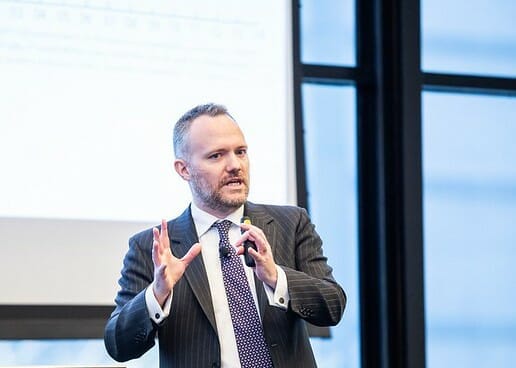Once the core part of the COVID-19 crisis is behind us, leading market participants will continue to engage with the long-term imperative. Major asset owners have asserted their long-term view and the stakeholder approach seems likely to accelerate given the shape and impact of this current crisis.
In practice, especially in a time of uncertainty and disruption, we know that the “long-term” is a place that’s often easy to talk about but harder to operationalise in capital markets that can seem hooked on right now and the next quarter.
The SEC’s guidance this week recognises that forward-looking information can be hard, but is highly valued, particularly during this crisis. But what is true during this crisis is surely true the rest of the time. To understand a company’s value proposition requires a real sense of its ability to innovate and be a source of disruption (not its victim). That requires a rounded view of the forward story and an assessment of key ESG issues and mega-trends.
We think there are a few simple principles to help shape disclosure towards decision-relevant information on long-term strategy that avoids the worst examples of impression management, virtue signaling and boilerplate. CEOs and their teams can engage with these as they experiment with the emerging practice of talking in greater detail about long-term strategy to the capital markets – an imperative now more than ever.
Forward-looking for the long term
We know that corporate disclosure abounds with backward-looking information and much of the forward-looking information that corporations do provide is in-quarter or in-year (across a narrow range of financial metrics). You can’t drive a car if you can only see 10 feet in front of the windshield. Institutional investors have asked for issuers to talk about a period of at least three to five years forward across financial, operational and strategic metrics and milestones (as appropriate to the relevant sector).
Management can signal a long-term outlook by talking about the mega-trends that are going to impact the business and how management assesses the balance of risks and opportunities these present.
If you have a substantial GHG footprint, TCFD is a critical tool for reporting on your alignment with the transition to the low carbon economy – and its inclusion of scenario analysis (which well advised companies should not fear doing and disclosing).
Science-based targets will become table-stakes to receive investor support, irrespective of the federal regulatory stance. Capital allocation is also ripe for a robust forward-looking treatment, enabling companies to explain, for example, whether they have the balance sheet resilience to ride out a future crisis. As the COVID-19 period has revealed, flawed short-term thinking around capital distribution and indebtedness can imperil ostensibly successful companies. As ever, past is not prologue; investors need to be able to understand how corporations are thinking through and responding not just to current but emerging risks.
Materiality
Management can use materiality to show how it is thinking through complex current and emerging risks and prioritising such issues in strategy and capital allocation.
A key part of these disclosures are the financially material ESG issues that are the precursors of financial performance. Corporations can use the rigorous framework provided by the Sustainability Accounting Standards Board (SASB) to identify, organise, and disclose on key themes in a way relevant to investors. Corporations should also engage with materiality as a forward-looking concept; seeking to identify not just the issues that are material today, but those issues that may become material potentially impairing profitability and causing license to operate issues (think plastic waste as an issue five years ago and what it looks like today, or indeed pandemic response as zoonotic diseases become more common).
Integrated reporting
As companies get their arms around ESG issues they have to integrate them across their reporting ecosystem. Unfortunately, many companies when they are asked for ESG disclosures seem to hear CSR and start talking about citizenship awards and do-goodery; that is part of a corporation’s story, but only a fractional part.
For a start, issuers can talk about the internal processes they have put in place to oversee and monitor ESG: clear reporting lines to board and management, ESG working groups, collaborations between IRO and CSO, robust and on-going materiality assessments. Demonstrate that the core functions have at least started on the journey; investors don’t expect perfection.
Context
As with any capital markets presentation, the long-term value narrative can’t be a recitation of good news stories. A CEO may want to highlight key initiatives within the business that are aligned with societal expectations, such as the increasing use of electric vehicles. However, to avoid being dismissed as impression management, such initiatives have to be contextualised to help investors assess their significance within the business. What per cent of fleet are EVs? How will that change over time? When will the fleet be all EV? Why has the company prioritised this “green” investment over others? Absent context, such disclosures will always have credibility and usefulness issues.
The existing reporting ecosystem tends to have a relatively short-term focus. Investors are increasingly asking for a greater understanding of a corporation’s long-term value story. Corporations have an opportunity to layer a long-term outlook and a broader set of value themes into their disclosures. This is particularly urgent at a time when the social implications of corporate practices are under renewed scrutiny. This is the start of a journey that will paradigmatically change corporate disclosure over time. More companies need to get started in order to not get left behind.
For further information on these disclosure principles click here
Brian Tomlinson is director of research, Chief Executives for Corporate Purpose



